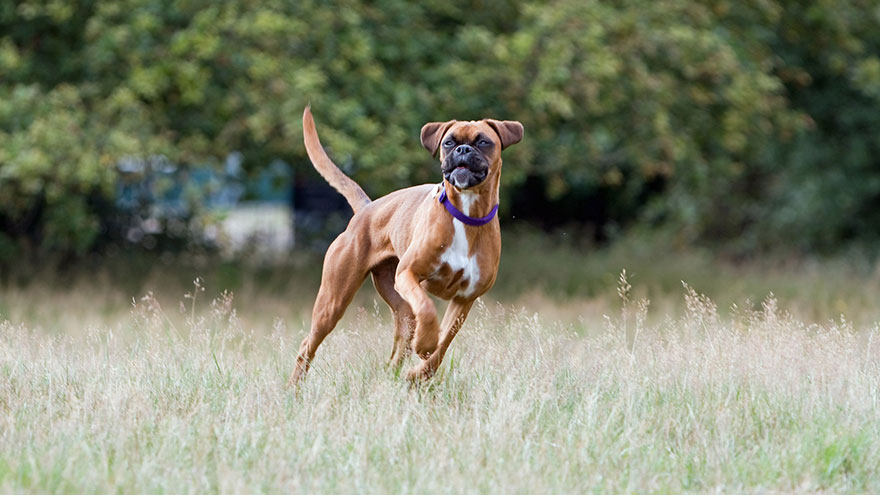How to Train Boxer Dogs
Boxers are a highly intelligent dog breed. Boxers are often selected as pets for their distinguished and family-friendly demeanor, animated personalities and watchdog capabilities.
Training a boxer requires knowledge of the breed and consistent command exercises. However, with diligent practice and a calm, assertive leadership, boxers can be made into obedient and loving members of the family.
7 Steps to Train Boxer Dogs

1. Begin training your boxer as soon as you bring it home, whether you purchased it from a breeder at nine weeks or adopted it from a rescue at age eight.
Boxers need to be given clear command lines to prevent pushy behavior (and devious troublemaking). If at all possible, the boxer should have mastered basic commands before 13 to 16 weeks of age to prevent it from testing alpha leadership.
If the dog receives consistent training and positive reinforcement, your boxer can quickly understand basic commands.
2. Teach your boxer basic commands: sit, come, heel, stay and quiet.
Additionally, ensure that your boxer does not jump up on people (which they can be prone to do). Practice with “clicker training” during exercises.
For example, when your dog comes when its name is called, click the training clicker device and reward with a small treat. Soon, your dog will learn to come upon command.
3. Require your boxer to heel while on leash.
It is a strong breed and will be very hard to walk if not taught to heel. Teach your dog to stay by placing a treat on the ground and commanding firmly for the dog to “Stay.” Couple the verbal command with raising your hand in the “Stop” position.
Reward the dog if it waits to grab the treat. Practice moving further away, commanding “Stay,” and allowing the boxer to retrieve the treat after a given period of time. Practice additional exercises with the same standard, and do not deviate from the exercise.
4. Give your boxer training breaks.
While a boxer is extremely intelligent, its active mentality may contribute to distractions. If your boxer breaks its attention during consistent training sessions, give 10 minutes of command-practice coupled with 10 minutes of free play (such as tossing the ball in the backyard or going for a walk).
This will help your boxer maintain focus during the training sessions. Be patient if your Boxer exhibits stubborn behavior and remember that consistent practice is key to your boxer’s obedience.
5. Establish alpha leadership.
As boxers are extremely intelligent and tend to be strong-willed, ensure your boxer views you as the family pack leader. Boxers that do not view their owners as the alpha can be pushy, sneaky, hard-to-control and possibly aggressive.
Any signs of dominance–to a human or another dog–should be corrected immediately. If your boxer exhibits healthy, obedient behaviors, consider advancing its training to home and people guardianship (as boxers make excellent watchdogs).
6. Allow your boxer plenty of daily exercise.
Boxers are a high-energy, playful, athletic breed; Visit the dog park for a rigorous romp several times a week and join your dog on a brisk walk at least twice daily. Throw a ball with your boxer in the back yard and give it the opportunity to work for your affection.
Additionally, provide your pet with plenty of toys to alleviate boredom. Consider a tough chew toy (such as the Super Kong), as boxers have strong jaws.
7. Visit the veterinarian.
Schedule regular check-ups at the vet, and be aware of common conditions that afflict the boxer breed, such as hip dysplasia, tumors, hypothyroidism and aortic stenosis. Ensuring the health, nutrition and care of your Boxer will help it live a live a long, happy life (possibly up to 14 years).
Tips and Warnings
- Be patient; Dog training requires positive, consistent exercises.
- Consult a professional dog trainer, should you have difficulty training your boxer.
- Never mistreat a boxer in any way.
- Give your boxer plenty of exercise to avoid hyper, bottled-up energy.
You Might Also Like : Boxer : 10 Most Common Questions

